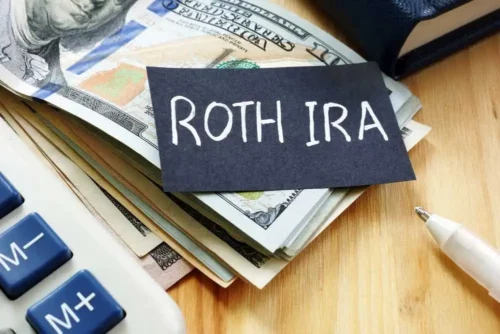In the realm of retirement savings, IRAs, or Individual Retirement Accounts, form the backbone of many Americans’ plans.
Traditional IRAs and Roth IRAs are familiar to most savvy investors, but there’s another player on the field that might not be as well-known: the Super Roth IRA. So, what is a super roth IRA?
This financial vehicle offers specific benefits that cater to individuals looking to optimize their retirement savings.
In this article, we will explore everything you need to know about Super Roth IRAs, how they compare to other retirement accounts, and why they might be an essential element of your financial strategy.
What Is A Super Roth IRA?
The term “Super Roth IRA” is not an official designation but rather a colloquial term that usually refers to the strategy of contributing to a Roth IRA after maximising other retirement account contributions, such as those made to a 401(k).
It’s like adding a turbocharge to your retirement savings, taking advantage of the unique benefits that Roth IRAs offer. Let’s delve deeper into what puts the ‘super’ in Super Roth IRA.
Definition
A Super Roth IRA follows the same basic principles as a standard Roth IRA – contributions are made with after-tax dollars, and therefore, the money grows tax-free, with no taxes paid on withdrawals in retirement.
However, the term Super Roth IRA implies maximizing these benefits by contributing the highest amount allowed and potentially employing additional strategies like a backdoor Roth IRA conversion for those with higher incomes.
Mechanics of a Super Roth IRA
Just like with a traditional Roth IRA, you contribute after-tax dollars to a Super Roth IRA. The difference lies in how you leverage the account to boost your retirement savings.
For instance, a Super Roth IRA is often considered part of a more extensive retirement strategy that includes maxing out employer-sponsored plans first, like a 401(k), before making Roth IRA contributions.
Eligibility Requirements
Though the IRS sets guidelines for who can contribute to a Roth IRA based on income, a Super Roth IRA strategy can often sidestep those through tactics like the aforementioned backdoor conversion – converting a traditional IRA into a Roth IRA regardless of income level.
However, it’s essential to be well-versed in the rules because improper execution could lead to unnecessary taxes or penalties.
Benefits of a Super Roth IRA
The attraction of a Super Roth IRA lies in its long-term benefits, particularly related to tax savings and flexibility. By understanding and leveraging these benefits, you can potentially build a more robust nest egg for your golden years.

Tax Advantages
One of the most significant advantages of a Super Roth IRA is its tax treatment. Contributions are taxed upfront, which means that all future withdrawals, including earnings, are tax-free provided certain conditions are met.
This can be incredibly advantageous for those who anticipate being in a higher tax bracket during retirement, as it locks in the tax rate at the time of contribution.
Withdrawal Rules
Another benefit is the flexibility of withdrawals. While traditional IRA and 401(k) holders must begin taking Required Minimum Distributions (RMDs) at age 72, Roth IRAs, including Super Roth IRAs, have no RMDs during the account owner’s lifetime.
This feature not only extends the tax-free growth period but also provides more control over retirement funds.
Long-term Financial Growth
The power of compounding interest is a fundamental advantage of any retirement account, but it shines in a Super Roth IRA.
Because earnings grow tax-free and are not diminished by future taxes, the potential growth over several decades can be substantial, offering a significant advantage when planning for retirement.
How to Set Up a Super Roth IRA?
Venturing into the world of Super Roth IRAs begins with setting up the account properly and selecting the right financial institution to meet your needs.

Choosing a Provider
When selecting a provider for your Super Roth IRA, it’s crucial to consider factors such as investment options, fees, and ease of access. Look for low-cost providers with a wide range of investment choices that align with your financial goals and risk tolerance.
Step-by-Step Account Setup Process
Typically, setting up a Super Roth IRA involves several steps:
- Research and select a reputable IRA custodian or brokerage firm.
- Complete the application process, including providing personal and financial information.
- Fund the account through a transfer, rollover, or contribution.
Having accurate documentation and information on hand will streamline the process, enabling you to begin investing in your future rapidly.
Investment Strategies for Super Roth IRA
Investing in a Super Roth IRA is not just about making contributions; it’s about being strategic with investment choices to maximize the potential of those contributions.
Diversification
Diversification is a widely accepted method for managing investment risk.
Implementing a diverse array of assets in your Super Roth IRA can help ensure that your retirement savings are not overexposed to the fluctuations of a single market sector.
Risk Management
Your investment strategy should align with your risk tolerance, which often changes as you age. Younger investors may tolerate more risk for potentially higher returns, while those closer to retirement may prefer stability.
Tailoring your investment approach to your individual risk profile is essential for achieving your financial goals without undue stress.
Conclusion
The concept of a Super Roth IRA, while not officially named in the tax code, represents an approach to maximize retirement savings and tax advantages beyond those of traditional or Roth IRAs.
By employing strategies such as the Backdoor Roth IRA for those exceeding income limits, or the Mega Backdoor Roth for maximizing after-tax contributions, individuals can significantly enhance their retirement wealth.
These approaches, while complex, offer a powerful means to grow retirement funds tax-free, emphasizing the importance of strategic financial planning and understanding of IRS regulations to effectively utilize such vehicles to their fullest potential.


 Tags:
Tags:










